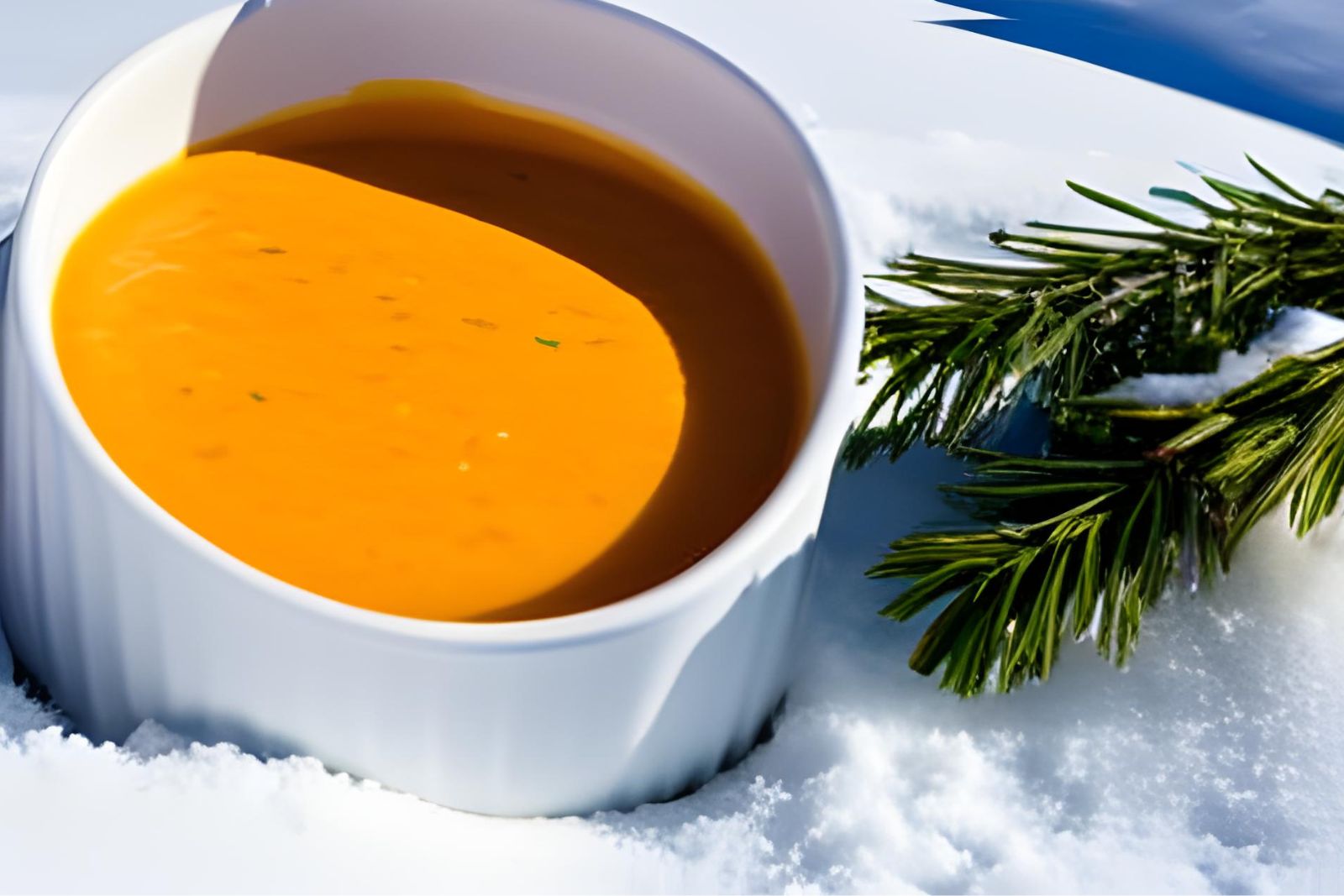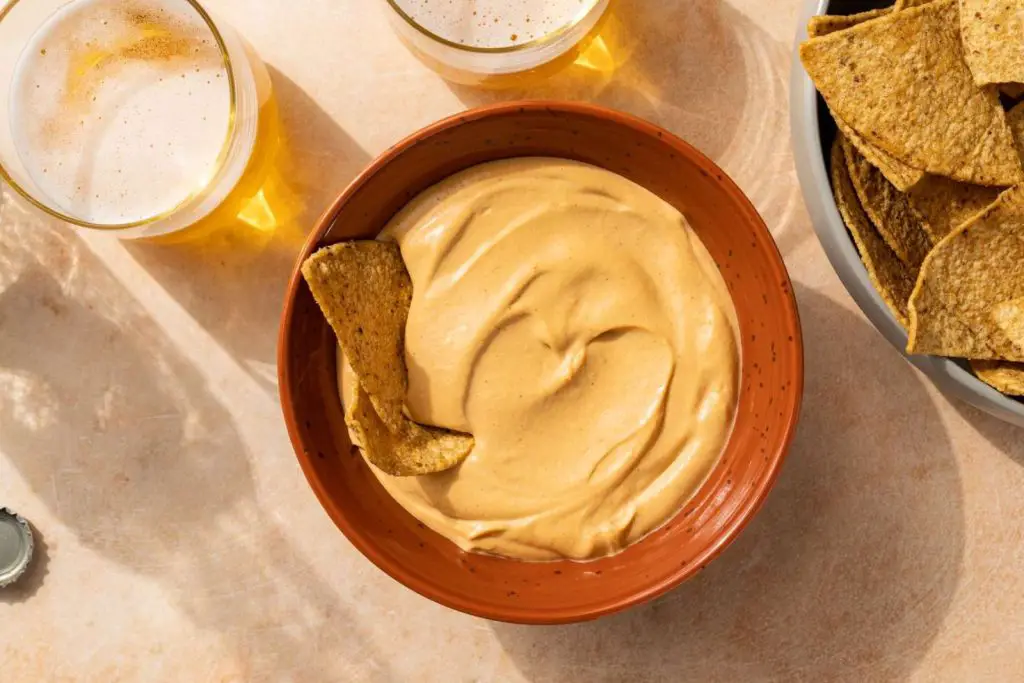
Gravy, the rich and savory sauce that elevates the flavors of countless dishes, is a staple on dining tables around the world. Whether accompanying roasted meats, mashed potatoes, or biscuits, gravy adds a luscious touch that enhances the overall dining experience. With its delectable blend of meat juices, stock, and seasonings, homemade gravy carries a depth of flavor that is hard to replicate.
To save time and ensure you always have delicious gravy on hand, freezing it can be a convenient option. Freezing gravy not only helps preserve its flavors and texture but also allows you to have this versatile sauce readily available for future meals. In this guide, we will explore the best methods for freezing gravy, ensuring that you can enjoy the rich and savory goodness of homemade gravy whenever you desire, without the need for last-minute preparation.
Here are the simple steps to freeze gravy:
Step 1: Allow the gravy to cool down
Once you have finished cooking your gravy, it is important to allow it to cool down completely before freezing. Cooling the gravy to room temperature before freezing is essential for several reasons.
Firstly, allowing the gravy to cool helps prevent condensation from forming inside the container or freezer bag. If hot or warm gravy is immediately transferred to the freezer, the temperature difference between the hot gravy and the cold freezer environment can cause moisture to form. This moisture can lead to ice crystals and freezer burn, which can negatively affect the texture and flavor of the gravy.
Secondly, cooling the gravy before freezing helps in maintaining its quality. Rapid temperature changes can sometimes cause certain ingredients in the gravy to break down or separate, resulting in a less desirable texture or consistency. By cooling the gravy slowly to room temperature, you can help preserve its smoothness and ensure a more enjoyable dining experience when you later thaw and reheat it.
Cooling the gravy allows you to assess its flavor and consistency before freezing. Sometimes, during the cooking process, flavors may intensify or change slightly. Allowing the gravy to cool gives you the opportunity to taste and adjust the seasoning if necessary. This step ensures that the frozen gravy will retain the desired taste when reheated.
Step 2: Choose suitable containers or freezer bags
When freezing gravy, it is crucial to select the right containers or freezer bags to ensure optimal preservation and convenience. Here’s why choosing suitable options is important:
- Airtight and leak-proof: To maintain the quality and flavor of the gravy, it’s essential to prevent air exposure and leakage. Airtight containers or freezer bags create a barrier that helps prevent the gravy from absorbing unwanted odors or flavors from the freezer. Additionally, they keep the gravy from drying out and forming freezer burn, which can negatively impact its taste and texture.
- Freezer-safe materials: Make sure the containers or freezer bags you choose are specifically labeled as freezer-safe. These materials are designed to withstand low temperatures and won’t become brittle or crack in the freezer. Avoid using containers or bags that are not intended for freezing, as they may not provide adequate protection against freezer burn or maintain the quality of the gravy.
- Portion-sized options: Consider using small containers or portion-sized freezer bags when freezing gravy. This allows for convenient thawing and serving. By dividing the gravy into individual or smaller portions, you can easily thaw only the amount you need without having to defrost the entire batch. This is especially useful if you frequently use gravy as a condiment or for smaller meals.
- Stackable and space-saving: Opt for containers or freezer bags that are stackable and take up minimal space in the freezer. This allows for efficient use of freezer space and easy organization. Stackable containers or bags help maximize storage capacity, making it easier to store multiple batches of gravy or other frozen items alongside each other without taking up unnecessary space.
- Transparent or labeled: It’s beneficial to choose containers or bags that are transparent or have an area for labeling. Transparent options allow you to easily identify the contents without having to open or defrost them. Alternatively, labeling the containers or bags with the date and contents helps you keep track of the storage time and ensures you can quickly find the desired gravy when needed.
Step 3: Portion and fill the containers or bags
When freezing gravy, it’s important to determine the portion sizes you prefer before filling the containers or freezer bags. Here’s why portioning and leaving some headspace are essential steps in the freezing process:
- Portion control: Portioning the gravy before freezing allows for greater convenience when it comes to thawing and using it later. By dividing the gravy into individual or suitable portion sizes, you can thaw and heat only the amount you need without having to defrost the entire batch. This is particularly helpful if you use gravy as a condiment or for specific recipes that require specific quantities.
- Uniform heating and thawing: Portioning the gravy ensures that it will heat and thaw more evenly. Smaller portions have a larger surface area, allowing for faster and more consistent heating or thawing compared to a large frozen block of gravy. This ensures that each portion is heated thoroughly and uniformly, resulting in a better dining experience.
- Using a ladle or measuring cup: When portioning the gravy, using a ladle or measuring cup can help ensure accuracy and consistent portion sizes. This is especially useful if you’re aiming for precise measurements or if you want to maintain consistency in your recipes.
- Leave some headspace: It’s important to leave some headspace in the containers or bags before sealing them. During the freezing process, liquids expand as they turn into ice. Leaving sufficient headspace allows room for the gravy to expand without causing the containers or bags to burst. This prevents messy leaks and maintains the integrity of the packaging.
To portion the gravy, you can use a ladle or measuring cup to scoop out desired amounts into each container or freezer bag. Make sure to fill them leaving about ½ to 1 inch (1.3 to 2.5 cm) of headspace at the top to accommodate expansion during freezing.
If using freezer bags, squeeze out any excess air before sealing them to minimize the chance of freezer burn. For containers, ensure they have tight-fitting lids or covers to create an airtight seal and prevent moisture loss.
Step 4: Seal and label the containers or bags
After filling the containers or bags with the portioned gravy, it is crucial to properly seal and label them before placing them in the freezer. Here’s why sealing and labeling are important steps in the freezing process:
- Preventing air exposure: It’s important to tightly seal the containers or bags to prevent air exposure. Air exposure can lead to the development of freezer burn, which can negatively affect the texture, flavor, and quality of the gravy. A tight seal creates a barrier against air, helping to maintain the freshness of the gravy during storage.
- Avoiding cross-contamination: Properly sealed containers or bags prevent cross-contamination between the gravy and other foods in the freezer. This is particularly important if you store different types of gravy or other frozen items together. The sealed containers or bags act as a protective barrier, ensuring that the flavors and odors of different foods do not mix.
- Freezer-safe labels: Using freezer-safe labels or masking tape to write the date and contents of each container is essential for easy identification and organization. This information helps you quickly locate the desired gravy without having to defrost and open multiple containers. Additionally, labeling allows you to keep track of the storage time and ensure that the gravy is used within a recommended timeframe.
- Easy inventory management: By labeling the containers or bags, you can create an inventory of your frozen gravy. This makes it easier to track the quantity and variety of gravy you have in stock. It enables you to plan your meals more effectively and ensures that you use the oldest gravy first to maintain freshness.
Label each container with the date of freezing and a clear description of the contents. You can use freezer-safe labels or simply write on masking tape affixed to the containers or bags. Make sure the labels are legible and easy to read.
Step 5: Place the containers in the freezer
Once you have properly sealed and labeled the containers or bags of gravy, it’s time to place them in the freezer for long-term storage. This step is crucial to ensure efficient freezing and easy organization. Here’s why the placement of the containers or bags in the freezer matters:
- Efficient freezing: Placing the sealed containers or bags in a single layer helps facilitate efficient freezing. When the gravy is in direct contact with the cold air of the freezer, it freezes more quickly and evenly. This rapid freezing process helps maintain the quality, texture, and flavor of the gravy.
- Flat surface: Creating a flat surface by arranging the containers or bags in a single layer allows for better utilization of freezer space. Flat surfaces enable easy stacking of additional items on top, maximizing the storage capacity of your freezer. By maximizing the space, you can efficiently store multiple batches of gravy or other frozen items, reducing wastage and ensuring you have ample room for other frozen foods.
- Easy stacking and storing: Placing the containers or bags in a single layer ensures that they freeze in a uniform shape and size. Once the gravy is completely frozen, it becomes easier to stack and store the containers or bags without the risk of them toppling over or taking up excessive space. This organized stacking system simplifies access to individual portions of gravy, allowing you to retrieve only the desired amount without disturbing the rest of the frozen items.
To create a flat surface, carefully arrange the sealed containers or bags in a single layer in the freezer. Make sure they are stable and not overcrowded, allowing sufficient airflow around each item. Avoid overpacking the freezer, as it can obstruct the airflow and compromise the freezing process.
If you have limited freezer space or need to freeze a large amount of gravy, consider using baking sheets or trays to create a flat surface. Place the containers or bags on the baking sheets or trays in a single layer and then slide them into the freezer. Once the gravy is frozen, you can remove the baking sheets or trays and store the frozen gravy directly in the freezer.
How long can I freeze gravy without it losing its flavor?
Gravy can be safely frozen for up to three months without significant loss of flavor. Freezing helps to preserve the taste and quality of the gravy by slowing down the growth of bacteria and other microorganisms. However, after the three-month mark, the flavor of the gravy may start to deteriorate gradually. To maintain optimal flavor, it is recommended to consume the frozen gravy within the three-month timeframe. Proper packaging and storage techniques, such as using airtight containers or freezer bags, can also help preserve the flavor during freezing.
Step 6: Thaw and use the frozen gravy
When the time comes to enjoy the frozen gravy you’ve stored, proper thawing is essential to preserve its flavor and quality. Thawing methods include refrigerator thawing, microwave defrosting, or gentle stove top heating. It’s important to avoid refreezing thawed gravy to maintain its taste and texture. Here’s a detailed explanation of each method:
- Refrigerator thawing: Thawing frozen gravy in the refrigerator is the safest and most recommended method. Place the sealed container or bag of frozen gravy in the refrigerator and allow it to thaw slowly overnight or for approximately 24 hours. The cool and controlled environment of the refrigerator ensures even thawing without exposing the gravy to temperature fluctuations. This gradual thawing helps maintain the texture and flavor of the gravy, resulting in a delicious and consistent final product.
- Microwave defrosting: If you’re short on time and need to thaw the gravy more quickly, you can use the defrost setting on your microwave. Follow the manufacturer’s instructions for defrosting frozen foods. Place the frozen gravy in a microwave-safe container or bag, ensuring there are no metal components. Set the microwave to the defrost setting and enter the appropriate weight or time. The microwave will apply low power levels to gently thaw the gravy. Pause and stir the gravy periodically to ensure even heating and prevent hot spots. Be cautious not to overheat the gravy during this process, as it may start to cook unevenly and compromise its quality.
- Stovetop gentle heating: Another method to thaw frozen gravy is by gently heating it on the stovetop. Transfer the frozen gravy to a saucepan or small pot and heat it over low to medium-low heat. Stir the gravy frequently to distribute the heat evenly and prevent scorching or burning. This method requires vigilance and attention to avoid overheating or boiling the gravy. The goal is to heat it just enough to melt the frozen portions while keeping the gravy at a safe temperature. Once the gravy has thawed and reached a desired temperature, it’s ready to be served.
Regardless of the thawing method you choose, it’s crucial to avoid refreezing a thawed gravy. Refreezing can negatively impact the texture, flavor, and overall quality of the gravy. Therefore, it’s recommended to thaw only the amount of gravy you intend to use at a given time. If you have leftovers after thawing, store them in the refrigerator and consume them within a few days to ensure freshness.
Once the frozen gravy has been properly thawed, you can use it in your favorite recipes, as a condiment, or as a complement to various dishes. Enjoy the rich flavors and savor the convenience of having delicious homemade gravy readily available whenever you desire.
Is it safe to thaw frozen gravy on the countertop?
It is not recommended to thaw frozen gravy on the countertop. Thawing at room temperature can lead to an unsafe temperature range where bacteria can multiply rapidly. The exterior layers of the gravy may thaw while the interior remains frozen, creating an uneven thawing process. To ensure food safety, it is best to thaw frozen gravy in the refrigerator or use alternative methods like microwave defrosting or gentle stove top heating. These methods provide controlled and gradual thawing, reducing the risk of bacterial growth and maintaining the quality of the gravy.
Can I refreeze gravy that has been previously thawed?
It is generally not recommended to refreeze gravy that has been previously thawed. When you thaw and then refreeze gravy, it undergoes temperature fluctuations that can impact its texture, flavor, and overall quality. Additionally, repeated thawing and refreezing can increase the risk of bacterial growth and foodborne illnesses. To maintain the best quality and safety, it is advisable to thaw only the amount of gravy you need for immediate use and avoid refreezing any leftovers.
Other related questions
How do I know if my frozen gravy has gone bad?
To determine if your frozen gravy has gone bad, there are a few signs to look out for. Firstly, check for any off or foul odors emanating from the gravy when you thaw it. If there is a strong, unpleasant smell, it is an indication that the gravy may have spoiled. Secondly, examine the texture and consistency of the thawed gravy. If it appears slimy, grainy, or has separated into layers, it could be a sign of spoilage. Lastly, trust your taste buds. If the flavor is significantly off or unpleasant, it’s best to avoid consuming the gravy and discard it for safety reasons.
Can I use frozen gravy with fresh one?
Yes, you can use frozen gravy with fresh gravy. Combining frozen gravy with fresh gravy can be a convenient way to enhance the flavor and richness of your dish. When using frozen gravy, allow it to thaw completely before incorporating it into your recipe. Gradually add the thawed gravy to the fresh gravy, stirring well to ensure even distribution of flavors. This combination can add depth and complexity to your gravy, creating a delicious and well-balanced sauce for your meals.
Can I freeze gravy that has been made with vegetable broth instead of meat broth?
Yes, you can freeze gravy that has been made with vegetable broth instead of meat broth. Freezing vegetable-based gravy follows the same principles as freezing meat-based gravy. The key is to properly cool the gravy before freezing and use suitable containers or freezer bags to prevent freezer burn. When thawed and reheated, the vegetable-based gravy should retain its flavors and textures, offering a delicious option for vegetarians or those who prefer non-meat gravies.
Can I freeze gravy that has been flavored with herbs and spices?
Yes, you can freeze gravy that has been flavored with herbs and spices. Freezing gravy with herbs and spices is a great way to preserve its flavors and enhance the taste of your dishes. The herbs and spices will infuse their flavors into the gravy during the freezing process, resulting in a flavorful sauce when thawed and reheated. Just ensure that the herbs and spices are thoroughly mixed into the gravy before freezing, and consider using airtight containers or freezer bags to prevent flavor transfer and maintain the freshness of the herbs and spices.
Can I freeze gravy that has already been thickened with flour or cornstarch?
Yes, you can freeze gravy that has already been thickened with flour or cornstarch. The thickening agents, such as flour or cornstarch, will not significantly affect the freezing process or the quality of the gravy. However, it’s important to note that some thickened gravies may experience slight textural changes upon thawing and reheating, potentially becoming slightly thinner or grainier. To minimize this, you can slightly under-thicken the gravy before freezing, as it may thicken further during the reheating process.
Can I freeze gravy that contains dairy products?
Yes, you can freeze gravy that contains dairy products, but there are a few considerations to keep in mind. Freezing can sometimes cause dairy-based products to undergo textural changes, such as separation or a grainy texture. To mitigate this, consider using stabilized dairy products or adjusting the recipe to minimize the dairy content before freezing. Additionally, when reheating the frozen gravy, it is important to do so gently and stir it well to encourage the emulsification of the dairy components. Overall, while freezing gravy with dairy may alter its texture slightly, it can still be done with careful preparation and handling.








